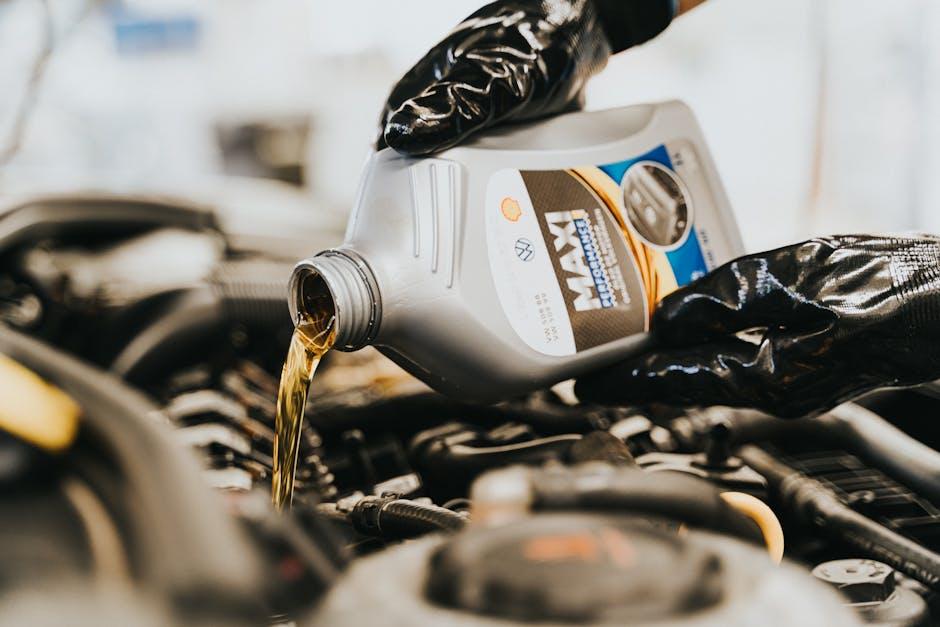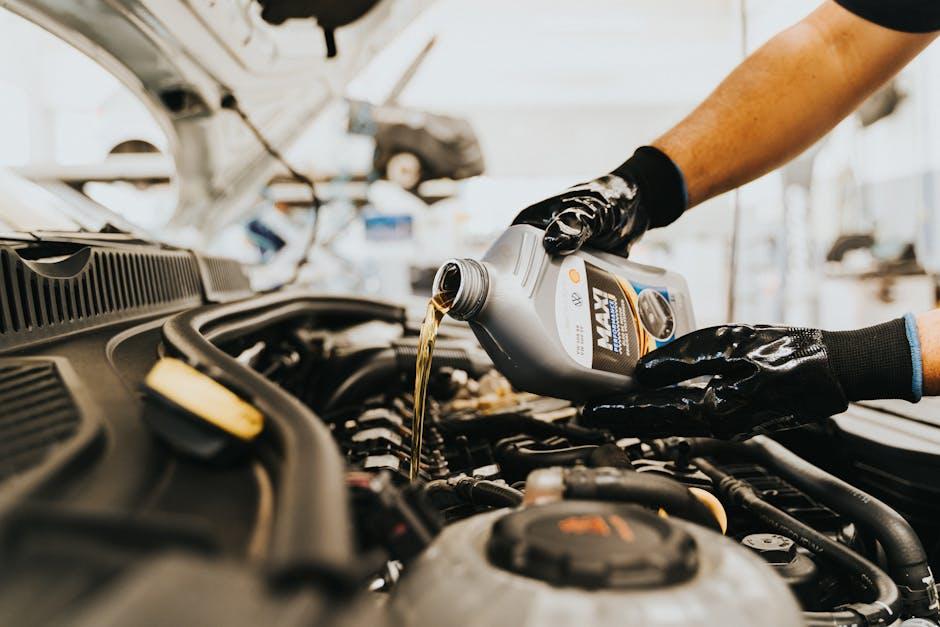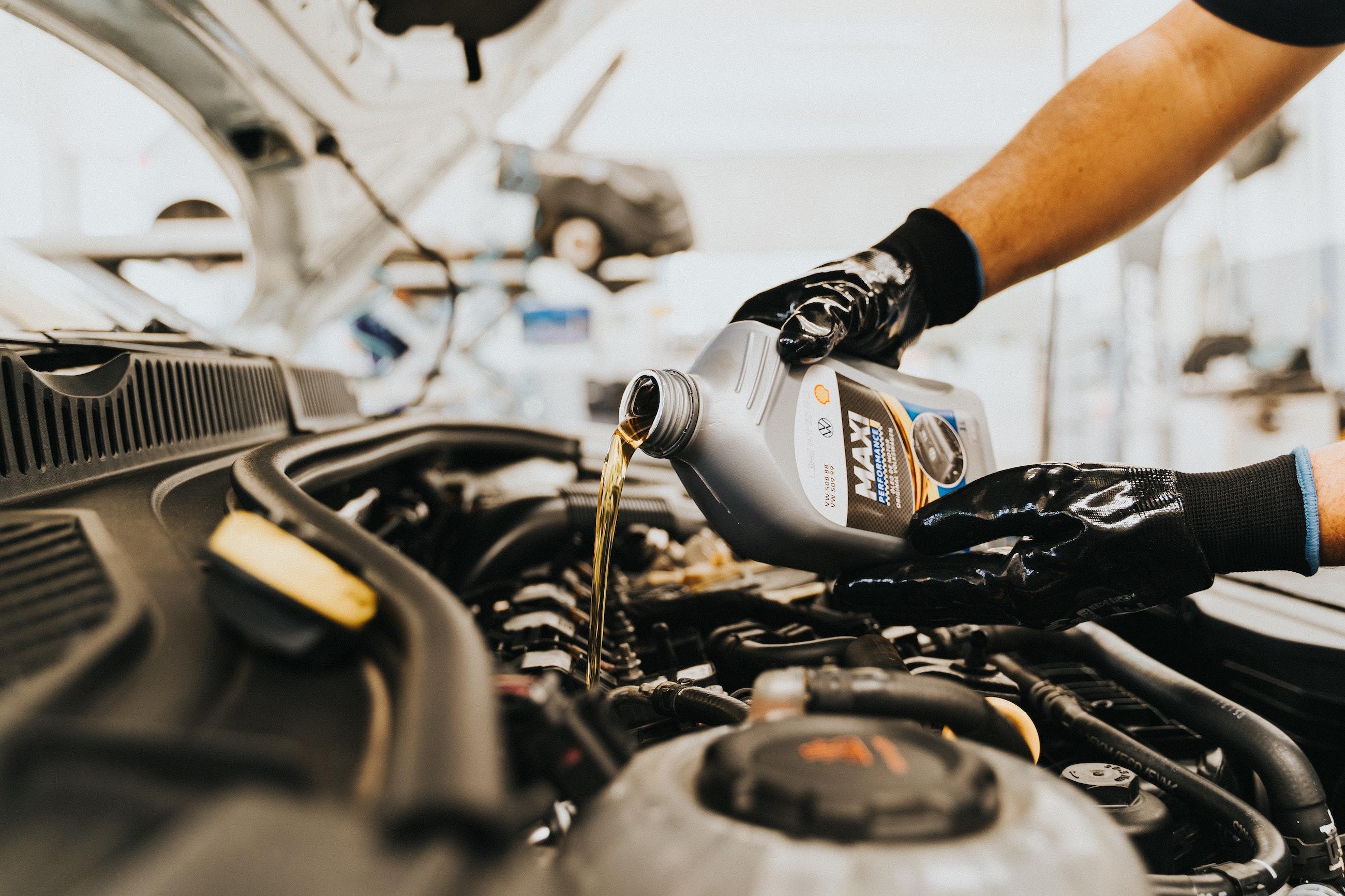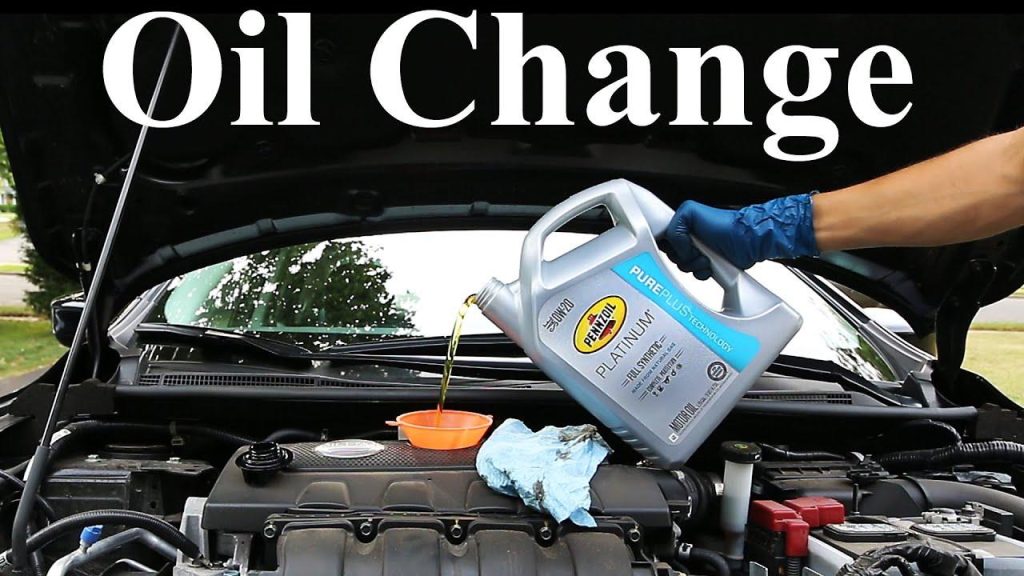Every vehicle has its own rhythm, a silent heartbeat that keeps it humming smoothly along the road. At the core of this pulse is the lifeblood known as motor oil—an often overlooked but essential element that lubricates, cleans, and protects your engine. But just like anything vital, motor oil has a shelf life. Knowing when to change your car’s oil isn’t just about following the odometer; it’s about understanding the delicate balance that keeps your engine performing at its best. In this article, we’ll explore the signs, guidelines, and smart practices that help you answer the question: When should you change your car’s oil?
Table of Contents
- Understanding the Importance of Timely Oil Changes
- Recognizing the Signs Your Car Needs Fresh Oil
- How Driving Conditions Influence Oil Change Frequency
- Choosing the Right Oil Type for Your Vehicle
- Expert Recommendations for Seasonal Oil Changes
- Balancing Manufacturer Guidelines with Real-World Usage
- Q&A
- To Conclude

Understanding the Importance of Timely Oil Changes
Regular oil changes play a crucial role in maintaining your vehicle’s health and performance. Over time, engine oil breaks down and becomes contaminated with dirt, debris, and combustion by-products, reducing its ability to lubricate and protect engine components effectively. Neglecting timely oil changes can lead to increased engine wear, overheating, and even costly repairs. By ensuring that your car’s oil is changed at recommended intervals, you not only enhance fuel efficiency but also extend the overall lifespan of your engine.
Key benefits of timely oil changes include:
- Improved engine lubrication and reduced friction
- Better heat dissipation to prevent overheating
- Decreased risk of sludge buildup that can clog engine parts
- Enhanced fuel economy and smoother performance
| Oil Change Interval | Typical Mileage Range | Recommended Vehicle Type |
|---|---|---|
| Conventional Oil | 3,000 – 5,000 miles | Older Vehicles/City Driving |
| Synthetic Blend | 5,000 – 7,500 miles | Modern Engines/Mixed Driving |
| Full Synthetic | 7,500 – 10,000 miles | High-Performance/Extended Use |

Recognizing the Signs Your Car Needs Fresh Oil
Keep an eye out for subtle changes in your car’s performance—these tiny signals can mean it’s time for fresh oil. Dimming engine power, increased noise, or a rough start in the mornings often indicate that your oil has aged beyond its prime. Another classic hint is a dark, dirty oil color when you check the dipstick; pristine oil should be amber and clear, while grime-laden oil becomes thick and black. These sensory clues are your car’s way of waving a flag for maintenance before bigger issues arise.
- Unusual engine noises: Tapping, knocking, or rattling sounds
- Oil change warning light: Dashboard indicators are an immediate alert
- Excessive exhaust smoke: Blue or gray fumes may signal degraded oil quality
- Decreased fuel efficiency: Rough engine performance can cause more fuel consumption
Using fresh oil isn’t just about smooth driving—it’s a vital shield against wear and tear. Below is a simple guide outlining typical signs paired with possible consequences if ignored:
| Sign | What It Means | Potential Issue |
|---|---|---|
| Dark, thick oil | Oil is contaminated | Engine sludge buildup |
| Engine knocking | Inadequate lubrication | Premature engine wear |
| Burning smell | Oil leaks or overheating | Seal damage or engine damage |

How Driving Conditions Influence Oil Change Frequency
Driving conditions play a pivotal role in determining how often your car’s oil needs to be changed. Frequent short trips prevent the engine from reaching optimal operating temperature, causing moisture and contaminants to build up in the oil. Similarly, stop-and-go traffic and urban driving create more strain on the engine, accelerating oil degradation. On the other hand, long highway drives tend to be gentler on your oil, as the engine runs consistently at an ideal temperature and RPM.
Different driving scenarios demand adjustments in oil change intervals. Below is a quick reference to help you identify when to lean toward more frequent oil changes based on your typical conditions:
| Driving Condition | Recommended Oil Change Frequency |
|---|---|
| City driving (stop-and-go) | Every 3,000 – 5,000 miles |
| Highway driving | Every 7,500 – 10,000 miles |
| Frequent short trips (<5 miles) | Every 3,000 miles or sooner |
| Extreme weather (hot or cold) | Every 3,000 – 5,000 miles |
- Dirt and dust exposure: If you frequently drive on unpaved roads, oil may break down faster due to increased contaminants.
- Towing or heavy loads: Puts extra stress on the engine, requiring more frequent oil changes.
- Stop-and-go traffic: Causes higher engine temperatures and stress, accelerating oil wear.

Choosing the Right Oil Type for Your Vehicle
Selecting the perfect oil for your vehicle goes beyond brand loyalty or price tags; it’s about understanding the nuances of your engine’s needs. Modern engines often require synthetic oils due to their superior ability to withstand extreme temperatures and reduce wear during cold starts. Conversely, if you drive an older car or a model that recommends conventional oil, sticking to that can help maintain engine integrity. Always consult your owner’s manual for manufacturer recommendations, and consider factors like your typical driving conditions, climate, and mileage.
Keep in mind the different types of oils available:
- Conventional Oil: Suitable for drivers with standard, low-mileage vehicles and less demanding driving habits.
- Synthetic Oil: Engineered for high-performance engines and extreme weather resilience.
- High-Mileage Oil: Contains additives designed to protect older engines and reduce oil consumption.
- Blended Oils: A mix of synthetic and conventional oils, balancing cost and performance.
| Oil Type | Best For | Typical Change Interval |
|---|---|---|
| Conventional | Standard engines | 3,000 – 5,000 miles |
| Synthetic | High-performance & modern engines | 7,500 – 10,000 miles |
| High-Mileage | Engines > 75,000 miles | 5,000 – 7,500 miles |
| Blended | Moderate usage, mixed performance | 5,000 – 7,000 miles |

Expert Recommendations for Seasonal Oil Changes
Maintaining your vehicle’s health hinges on timely oil changes tailored to the seasons. During colder months, oil thickens, losing its ability to lubricate effectively, which can strain your engine. Conversely, summer’s heat accelerates oil breakdown, demanding more frequent checks. Experts advise switching to a type of oil suited for temperature fluctuations—typically a synthetic blend that offers endurance in both chill and heat, ensuring your engine stays well-protected throughout the year.
To simplify seasonal oil maintenance, consider these crucial points:
- Winter: Opt for thinner, low-viscosity oils that flow smoothly in cold starts.
- Summer: Use oils with higher viscosity to withstand heat and reduce evaporation.
- Transitional Seasons: Gradually adjust oil type to prepare for upcoming temperature shifts.
- Frequency: Increase oil change frequency if you frequently drive in extreme conditions.
| Season | Recommended Oil Viscosity | Change Interval |
|---|---|---|
| Winter | 5W-30 or lower | Every 5,000 miles |
| Spring/Autumn | 10W-30 | Every 7,500 miles |
| Summer | 10W-40 or higher | Every 5,000 miles |

Balancing Manufacturer Guidelines with Real-World Usage
Car manufacturers provide oil change intervals based on extensive laboratory testing and ideal driving conditions. However, these guidelines often assume gentle driving habits, consistent temperatures, and well-maintained engines. In the real world, variations like stop-and-go traffic, extreme weather, towing heavy loads, or frequent short trips can accelerate oil degradation. Balancing these manufacturer recommendations with your unique driving patterns is essential for maintaining engine health and performance.
Consider evaluating your driving environment alongside the suggested oil change schedule. For instance:
- City driving: Frequent idling and short trips may require more frequent oil changes.
- Highway driving: Longer trips can be gentler on your engine, often allowing you to follow the manufacturer’s extended intervals.
- Extreme climates: Hot or cold conditions can affect oil viscosity and breakdown rate.
| Condition | Suggested Oil Change Frequency |
|---|---|
| Harsh Driving (towing, stop-and-go) | Every 3,000 to 5,000 miles |
| Moderate Driving (mixed conditions) | Every 5,000 to 7,500 miles |
| Ideal Driving (highway, gentle use) | Every 7,500 to 10,000 miles |
Adjusting your maintenance to reflect how you actually use your car can prevent engine wear and extend its lifespan. Remember, your car’s needs may not always align perfectly with the book, so use these guidelines as a flexible framework rather than a fixed rule.
Q&A
Q: Why is changing my car’s oil so important?
A: Think of your engine as a living machine—it needs clean oil to keep its parts moving smoothly. Fresh oil lubricates, cools, and protects the engine, preventing wear and tear. Over time, oil breaks down and picks up dirt, making it less effective. Changing your oil regularly helps your car run efficiently and extends its lifespan.
Q: How often should I change my car’s oil?
A: The answer isn’t one-size-fits-all. Traditionally, the rule of thumb was every 3,000 miles or three months. Today, many modern cars can go 5,000 to 10,000 miles between oil changes, thanks to advanced oils and engineering. Always check your owner’s manual—it’s the ultimate guide tailored to your vehicle.
Q: Does the type of oil affect the change interval?
A: Absolutely. Conventional oils usually require more frequent changes, while synthetic oils can last longer and perform better under extreme conditions. Switching to synthetic might mean you can safely extend your oil change interval, but again, follow your manufacturer’s recommendations.
Q: What happens if I wait too long to change my oil?
A: Neglecting oil changes can cause sludge buildup, reduce engine efficiency, and increase wear. In worst cases, it can lead to engine overheating or failure. Your car might run rougher, lose power, or display warning lights. Timely oil changes are like giving your engine a fresh start every few thousand miles.
Q: Are there signs that tell me it’s time for an oil change?
A: Yes. Some common hints include dark, dirty oil on the dipstick, an oil change light on your dashboard, unusual engine noises, or reduced fuel efficiency. Regularly check your oil level and look for these signals to avoid surprises.
Q: Can driving conditions affect how often I should change my oil?
A: Without a doubt. Frequent short trips, stop-and-go traffic, extreme temperatures, or dusty roads put extra strain on your oil. If your daily drive is more “city hustle” than highway cruise, you might need to change your oil more often than the standard interval.
Q: Is DIY oil changing a good idea?
A: Changing oil yourself can be satisfying and cost-effective if you have the right tools and knowledge. Just be sure to dispose of old oil properly—it’s hazardous waste! If you prefer convenience and expert care, professional service centers are a reliable option.
Q: What’s the takeaway on oil changes?
A: Treat your engine to fresh oil regularly—it’s one of the simplest steps to keep your car healthy and humming along. Listen to your vehicle, consult the manual, and adapt to your driving style. A well-lubricated engine is a happy engine, ready for the road ahead.
To Conclude
Knowing when to change your car’s oil isn’t just a routine task—it’s a vital step in preserving the health and longevity of your vehicle. Whether you follow the manufacturer’s mileage recommendations, opt for a time-based schedule, or rely on modern oil-life monitoring systems, staying on top of oil changes ensures smoother rides and fewer unexpected breakdowns. So, listen to your car, check that dipstick, and remember: a little care today keeps your engine humming tomorrow. Your car will thank you for it.


2 Comments
s8k129
s8k129